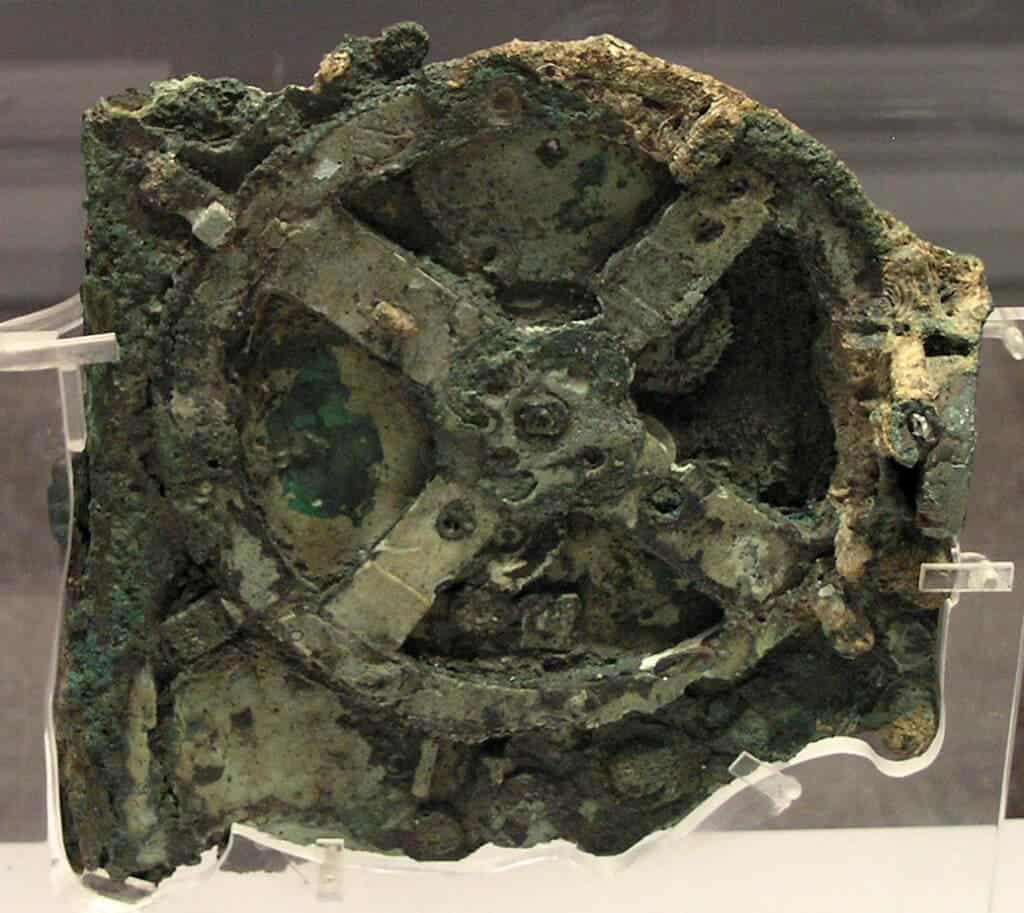The ancient bones could offer valuable DNA information from an ancient shipwreck victim.
The Antikythera site is one of the most intriguing ones in history, particularly because of what you see above. That’s the Antikythera mechanism, a 2000-year-old analogue computer used to predict astronomical positions and eclipses for the astrological calendar as well as the ancient Olympic Games. Composed of over 30 meshing bronze gears, the mechanism shows an unprecedented level of sophistication, and one that wasn’t re-encountered in history until the fourteenth century. But that’s not all of it.
The Antikythera Shipwreck is the largest ancient shipwreck ever discovered, probably representing a large grain carrier. Discovered by Greek sponge divers in 1900, it was also the first wreck ever to be investigated by archaeologists. After recovering dozens of valuable antiques, marble statues, gold jewellery, glassware, and an unique weapon the research team might have discovered something even more valuable: a skeleton.
“Against all odds, the bones survived over 2,000 years at the bottom of the sea, and they appear to be in fairly good condition,” Dr. Hannes Schroeder of the Natural History Museum in Copenhagen, Denmark, and an expert on DNA, said in a news release.
The find consists of a partial skull with three teeth, arm and leg bones, and several pieces of rib, the study writes. The skeleton, discovered in August, is the first to be recovered from an ancient shipwreck since DNA studies became a thing – and this could be very important. If the samples are well-preserved, then we could learn much about the person’s ethnicity and geographic origin, as well as some hints about his lifestyle. This would open an unprecedented window into the past. Who were those people? Where were they coming from, and where were they going? Schroeder guesses from the skeleton’s fairly robust femur and unworn teeth that the individual was a young man, but without the DNA tests, it’s hard to say more.

So far, they’ve named the bones’ owner Pamphilos, after a name found neatly scratched on a wine cup from the wreck. But we have no idea who he – or the original Pamphilos – was.
“Your mind starts spinning,” says Schroeder. “Who were those people who crossed the Mediterranean 2,000 years ago? Maybe one of them was the astronomer who owned the mechanism.”
Researchers are understandably excited. Dr. Brendan Foley of the Woods Hole Oceanographic Institution and a member of the research team said:
“This is the most exciting scientific discovery we’ve made here,” Foley told the Guardian, adding that he believed the passenger or crew member “was trapped in the ship when it went down and he must have been buried very rapidly or the bones would have gone by now.”
He and the rest of the team hope to reconstruct a map of past population movements, and they want to see how ancient individuals can fit on that map.



